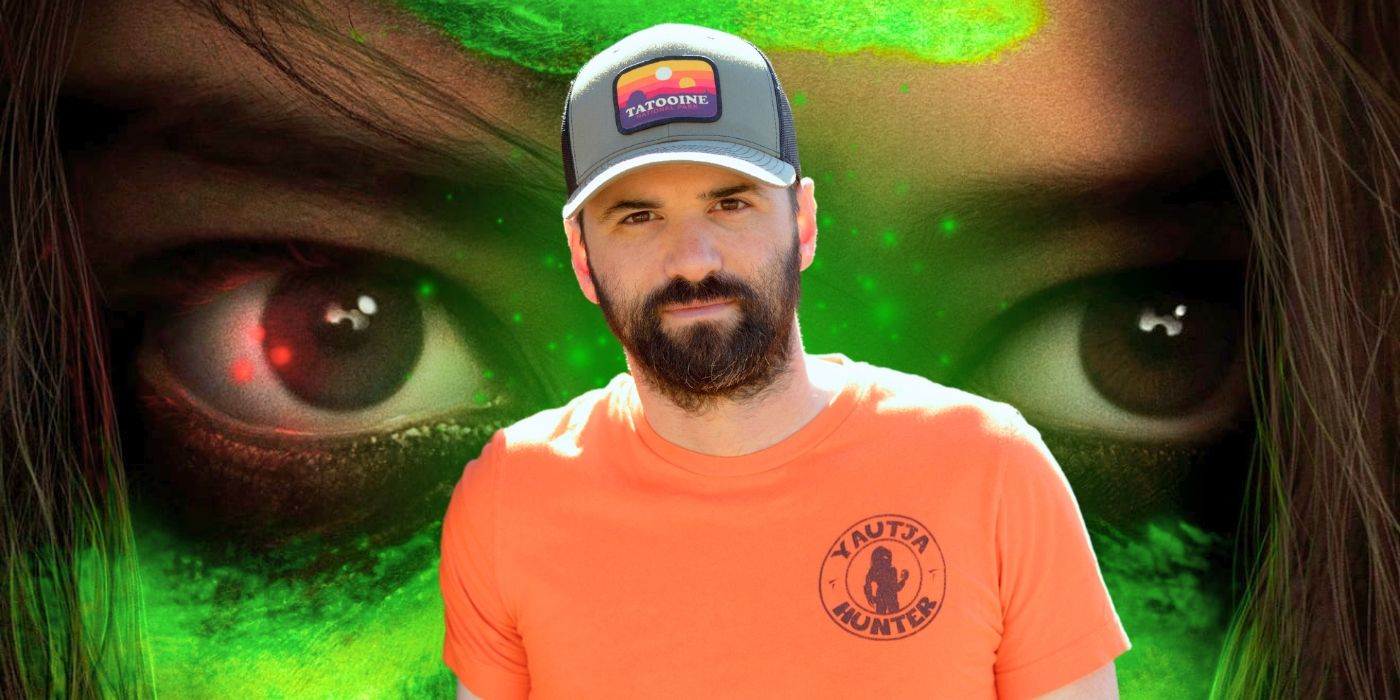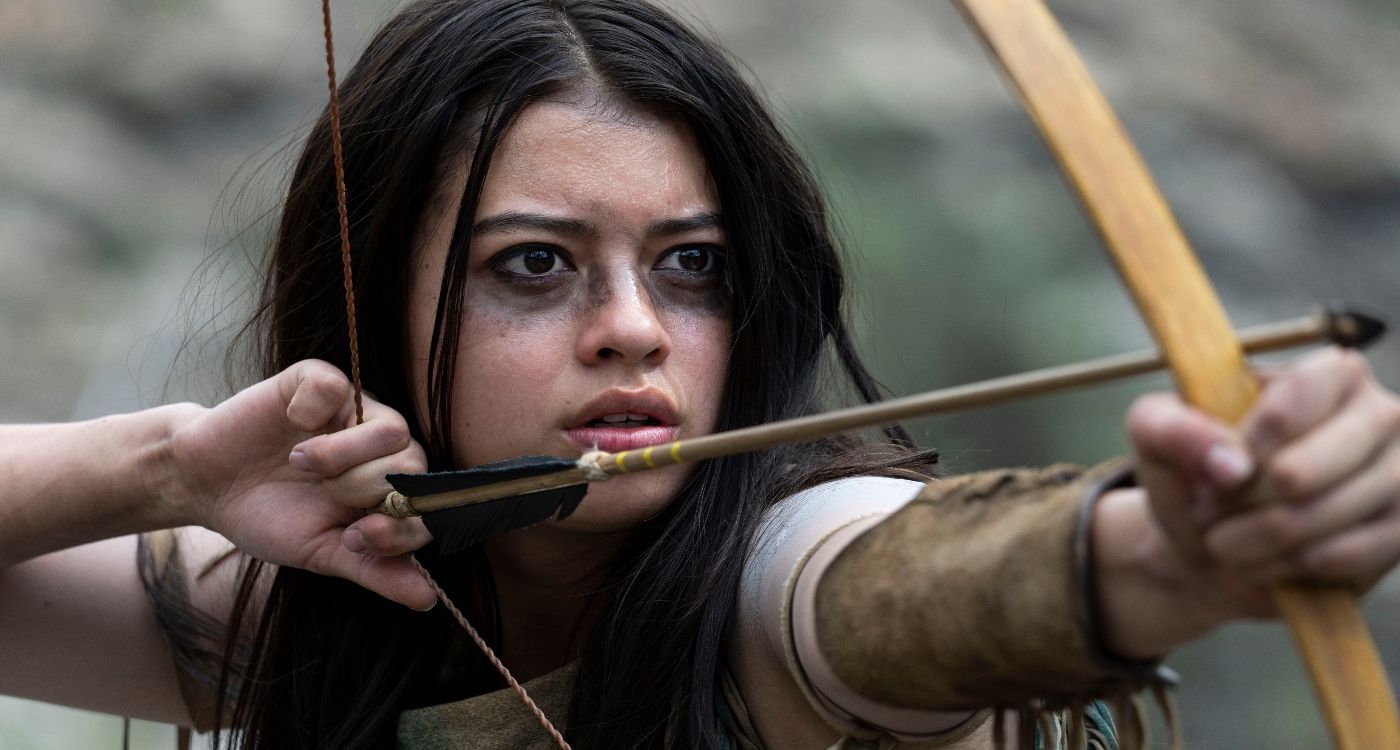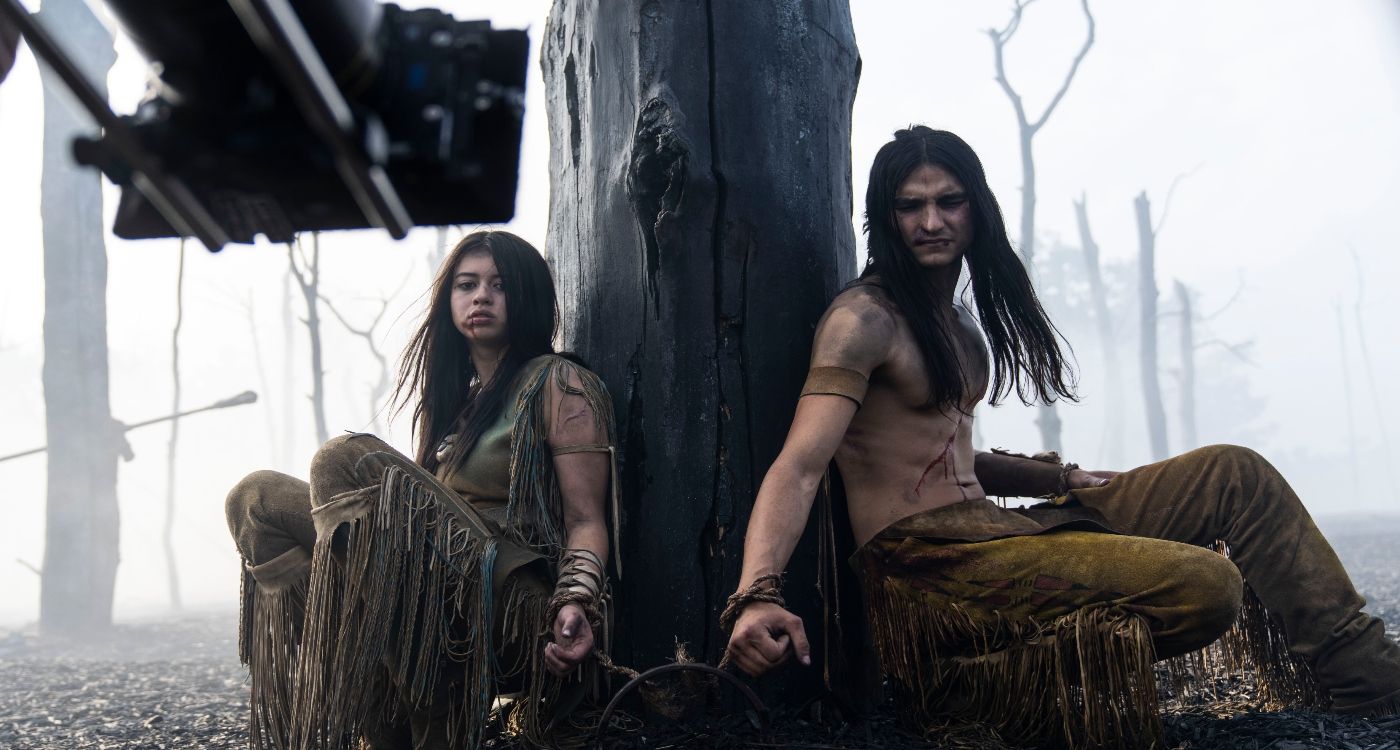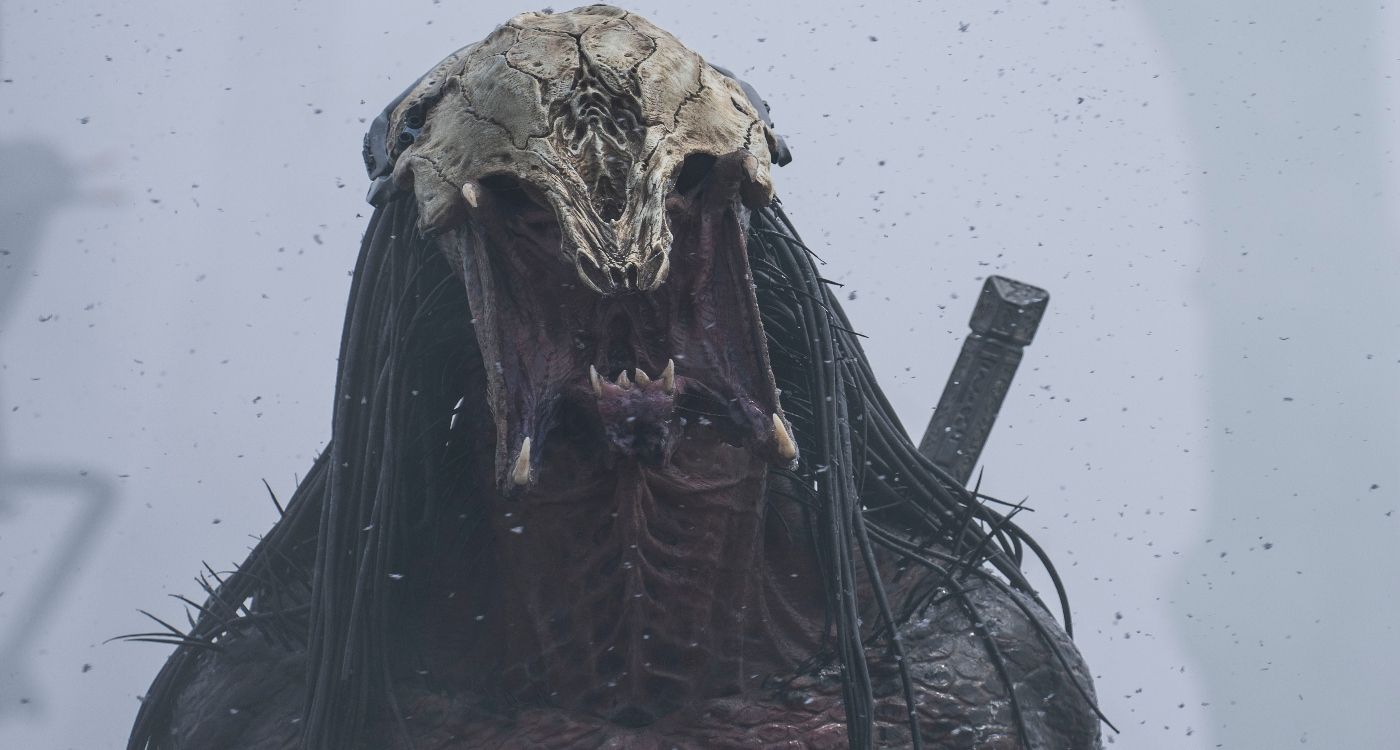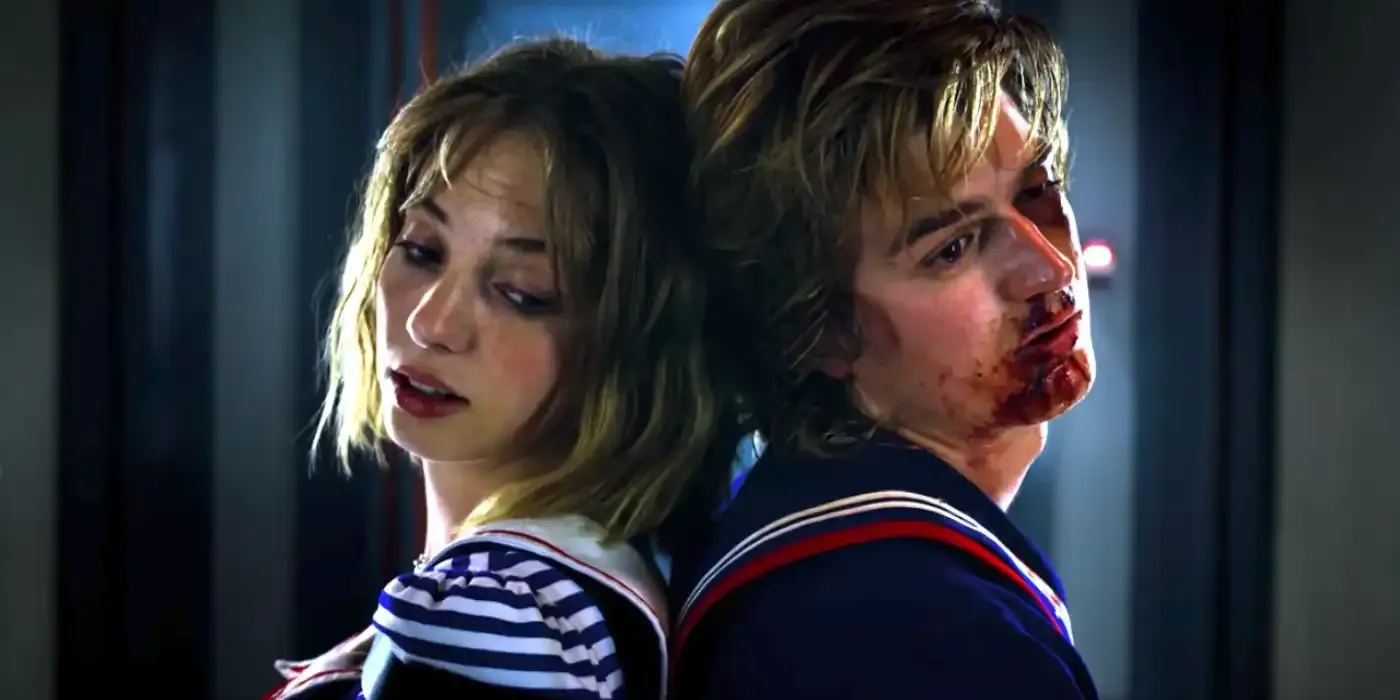The Big Picture
- Director Dan Trachtenberg's 2022 film "Prey" stands out as a successful prequel to "Predator," set 300 years in the past and centered around Naru, a young Comanche woman who wants to prove her worth as a warrior.
- The film became a critical and commercial success, earning nominations for several Emmys and becoming Hulu's all-time number one premiere.
- The DVD release of "Prey" offers bonus content, including an alternate opening, behind-the-scenes footage, and audio commentary, providing fans with an opportunity to delve deeper into the film's world and production.
It’s really difficult to make a prequel or sequel in a franchise stand out from other installments. Way more often than not, they feel like CGI-heavy derivatives of the many movies that preceded it. One of the most impressive exceptions to this Hollywood pattern is director Dan Trachtenberg’s 2022 movie Prey, a daring prequel to Arnold Schwarzenegger’s 1987 sci-fi action horror film Predator. Set a whopping 300 years in the past, in 1719, on the Northern Great Plains, the movie follows Naru (Amber Midthunder), a young Comanche woman frustrated with her place in society. She doesn’t want to heal like a young woman in her tribe is expected to — she wants to hunt like her brother, Taabe (Dakota Beavers).
Naru’s underdog story takes place right when the first Predator ever touches down on Earth. As the title of the film suggests, the Predator (played by Dane DiLiegro) is hunting down its prey, which ends up including some of Naru’s tribe, giving her the chance to not only protect those she loves but prove her worth as a warrior. Trachtenberg’s prequel, which he co-wrote with Patrick Aison, became a critical and commercial success, having been nominated for several Emmys, including Outstanding Writing, Directing, and Sound Editing for a Limited or Anthology Series, Movie, or Special. The alien thriller also became Hulu’s all-time number one premiere.
This is what makes Prey’s DVD release that much more exciting. The Hulu original is finally able to reach a wider audience, as well as give fans over two hours of bonus content, including an alternate opening, behind-the-scenes with the cast and crew, and audio commentary with Trachtenberg, Midthunder, director of photography Jeff Cutter, and editor Angela M. Catanzaro. During our 1-on-1 conversation, Trachtenberg talked about his desire to make an underdog story, how critical sound is to Prey’s world, what it was like creating a 1700s version of the Predator, and whether or not the Predator respects Naru.
COLLIDER: I have a lot to dig into so I'm just going to hop right to it! 10 Cloverfield Lane and Prey are two of my favorite movies. They both have extremely subtle and dynamic character performances and I'm curious if there's anything in particular that you can maybe articulate about how you elicit those performances from your actors.
DAN TRACHTENBERG: I think both Amber and Mary, and a number of other actors I've worked with, but what attracts me to them and specifically in those roles, is they approach things as, “How would it really be?” They're not coming from a, “How could I find a way to deliver this performance in an interesting way or in a dynamic way? Or like we've never seen or find some oddity of human behavior?” It’s not like trying to put things on top, it’s more like digging in, and going, “But what would it really be like? How am I really in this?” It’s just very much my approach as well. So there's a real synchronicity. Sometimes we get caught up in mirroring genre or mirroring performances. Throw that away, because feelings are the same, from when I had a crush as a kid and I'm an adult and I have a crush, it’s the same feeling. Fear is the same feeling. I've changed, the way I've rationalized it has changed, but the feeling is the same. And so when I'm speaking with actors, when we're in a different time period, it’s a crazy different setting or the science fiction element, whatever it is, it's the same stuff. Let's talk the way that we talk to each other about those things and get to the meat of it, the heart of it. And both characters are very relatable and are kind of underdogs, and I'm very attracted to underdog stories.
It's a big part of why I wanted to make Prey. Arnold is the wish-fulfillment version. It's like, “Wouldn't it be cool to see a big guy like that take down an alien?” The original pitch is like Rocky versus an alien was how the 1987 Predator came to be. This is more like all of us have felt, I think, the way that Naru feels. I very much do, always, and so let's exercise that through the movie. It’s both intense and overwhelming and reassuring to see someone come out the other side. The other thing that connects those two characters and then in general what I always look to is characters breaking cycles. So Mary's character in 10 Cloverfield Lane is breaking a cycle. Amber's certainly breaking a cycle. That I find a very heroic act is when things are passed on to you, whether they be negative or positive, there's a way to turn that into something else.
That's so interesting and it kind of brings me to my next question, which was the underdog element. I really liked that that was a priority for you, and you mentioned in the bonus material how Amber was nervous to even take this on at first, before she even knew it was a Predator movie. “300 years ago” and “Comanche” don’t necessarily scream Hollywood, unfortunately. Was it a hard sell [to the studios]?
TRACHTENBERG: It wasn't, thankfully, beautifully. It's one thing to high-five each other in success of Transformers Five, but to high-five each other over a movie like this, that tells a story that's inspirational inside of a blood and guts, head, spine ripping, you know…the story is inspirational and we get to feature actors that are not often featured and get to perform and show themselves in a way that doesn't often happen. That’s a cooler high five to have. So I think that that was recognized on top of [the fact that] all the elements of the movie allowed it to be a less expensive opportunity. All that is sort of part of the concoction of like, “I think I can pull off this thing, we can all make this thing that is much more affordable, but still can, can deliver a giant experience, and cost half of what the last one cost. And do some good, inside and out.
You said you like stories with a little medicine in the ice cream, and I feel like that’s such a good way to describe this movie because I feel like you learn a lot without feeling like you're learning a lot. It’s just so emotional and it moves you. My mom loved this movie.
TRACHTENBERG: Love it. That's awesome. More than medicine in the ice cream, I want to make sure there's something I can leave the movie with, that it isn’t a forgettable experience, even though I've enjoyed so many of those movies and I've often been nearly seduced by, “I’d love to make movie X because what a blast! Wouldn’t it be cool?” But ultimately, thematically, if there isn’t something that I can take away and put in my pocket, and have with me for the rest of my time, then it just feels a little pointless. It's funny you say your mom, I thought about my mom when making it. I was so excited to show my mom this movie, which is insane, because it's filled with like spine rips and beheadings and all that, you know? But I remembered as a kid dying to show her [Terminator 2] and it never would have occurred to me in a million years to show her Terminator. But T2 is thematically rich, about parenthood, mother, son in particular. It’s a beautiful story that happens to have some kick ass stuff. And I was like, “Oh my God, my mom is gonna enjoy this kick-ass thing,” because it's actually a great movie first and then genre second. And that's what I realized through making [Prey] of what's hard for me to let go of and what I continue to pursue is like, “I need to make something that my mom would be proud of, and that moms in general could still enjoy, so, I love that your mom loved the movie. That's really awesome to hear.
Did your mom like Prey and Terminator 2?
TRACHTENBERG: She did! She did like T2 and she did like Prey. And my whole family liked Cloverfield Lane except for the end. [Laughs] Literally, they still bug me about it. “It was really good! Why did it have to end that way?” But they like Prey.
One of my favorite parts of Prey is the sound. You really feel the sound. In the bonus material you were diving into Sarah Schachner and how you were playing Assassin's Creed, and you were like, “Oh, I want this in my movie.” What did Sarah bring to the story that totally surprised you, and changed the evolution of the story from beginning to end?
TRACHTENBERG: I love Sarah and I love this movie's music and it was a real tall order because on the one hand, we really wanted the music to not feel like the kind of music you typically hear when you're in this period, and feel very modern and brooding. A lot of the temp score was like Sicario. And then there’s one piece of music, we used a piece of score that was high fantasy when Naru sets off on her own. That’s a totally different flavor and, and I loved it. My dream of dreams. Sarah found a way to combine both feelings, to have something that has the atmospheric brood that's more elegant and modern sensibility, and then also deliver the big sweeping adventure epic, And then also take the Predator themes and infuse that in very subtle ways into the score so that when you see the Predator, you're like hearing the theme from his movie. It's there baked in, in Sarah's way, and then she writes a jig for when the Predators taking down the fur trappers. That was just a fun idea. What if it was their music that he's killing them to? It was a real high wire act that she pulled off. She has a such a unique process. She records a lot of instruments on her own.
She worked with Robert Miraball, who's Pueblo. A lot of the wood instruments, the flute sounds, are all him. So diving into the culture and infusing that but not letting that be the dominant thing, it was really terrific. It’s funny you say you felt it, because sonically, too, like the sound design, one of the things I always say — and this is a team of people that I've worked with a couple of times now — my favorite thing growing up was watching a movie and feeling the rumble from the theater next to mine. Even if it wasn’t a scene that was a big action scene, but just feeling this rumble infused the movie with import, with bigness, with scale. We try to do stuff like that as much as possible. It just warms my heart to hear you use those words in particular.
I truly mean it! And I know exactly what you're saying, like when you go to the bathroom [at the movies] and all of a sudden you're like, “Oh the entire bathroom shaking.”
TRACHTENBERG: [Laughs] Right, right. Yeah.
The Predator in particular, I noticed you are very selective with how much you reveal of him and how often. I thought that was so smart, you didn't overdo it, you leave the audience wanting more, in the best way. Was there a lot of conversation around when you would reveal the whole Predator? About 50 minutes in is when you really get a good picture of him.
TRACHTENBERG: We actually clock out, I think quite similar to the ‘87 film. There's a very common statement that has been made ever since Alfred Hitchcock and then renewed by Steven Spielberg, which is, “it's all about what you don't see.” And so many filmmakers aspire to re-articulate that in their films and in speaking about the films. It's not about what you don't see, it's about what you do see, right? It's not that we didn't see the shark in Jaws, it's that we saw the POV of the shark and it's that we saw the buoy being dragged across the thing and it's fin and in Jurassic Park it's that we saw the vibrating cup that built suspense. And in Predator it’s that we saw the cloak and that we saw the green blood on the leaf and then we saw it with its mask and we saw it grabbing a skull from a thing. It’s not about hiding, it's about figuring out what to show, that can either be aggressive, or better build the tension, or be a little piece of storytelling that all builds upon itself. That’s what fed into all of these things. There were those three stages of the Predator in the original and all the sequels just sort of did the three stages again, so we kind of wanted to reinvent what you saw, so that even for diehard fans of the franchise, you were getting new stuff. And, those things in my mind were digging into the ethos of the Yautja species. Trophy hunters wearing a skull on your face is more Predator-y than just a biomask. So that’s all that went into that.
Do you think the Predator respects Naru?
TRACHTENBERG: Eventually. He does not, for a long…the whole thing is that even it doesn't even give a crap about her, doesn't see her as worthy. And then it does. I would say when its arm is chopped off by her is the moment that it goes, “Oh…you.” So I think eventually it does for sure.
“Oh, well done.”
TRACHTENBERG: (Laughs) Yeah, for sure.
I know you probably can't say a word about any of this, but I believe you're directing Season 5 of Stranger Things? Is there anything you could tease about that or your experience, or what you're looking forward to?
TRACHTENBERG: I was prepping it before the strike and doing previews for sequences and stuff. It’s awesome! I'm doing it because I love that show so much. I think every season has gotten better and better and better, and this is the final one, and the Duffers are geniuses and good, really good dudes. And this episode, that's just “an episode” of Season 5, has several awesome set pieces in it and it's gonna be huge, man. It's a big season, and, so far, so cool.
When I saw your name I was like, “Oh, that's perfect.”
TRACHTENBERG: Yeah, me and the Duffers have very similar sensibilities, raised around the same time and on the same movies, and this is genre stuff that I haven't totally gotten to play in yet and I don't know if I would, so, I’m glad I can just grab on. “I want to ride, too!”
Well Dan, thank you so much. I could talk about Prey forever. I hope I talk to you again someday, this was great.
TRACHTENBERG: Me too! Take care.
Prey is now available on 4K, Blu-ray and DVD, with over two hours of all-new bonus features.

